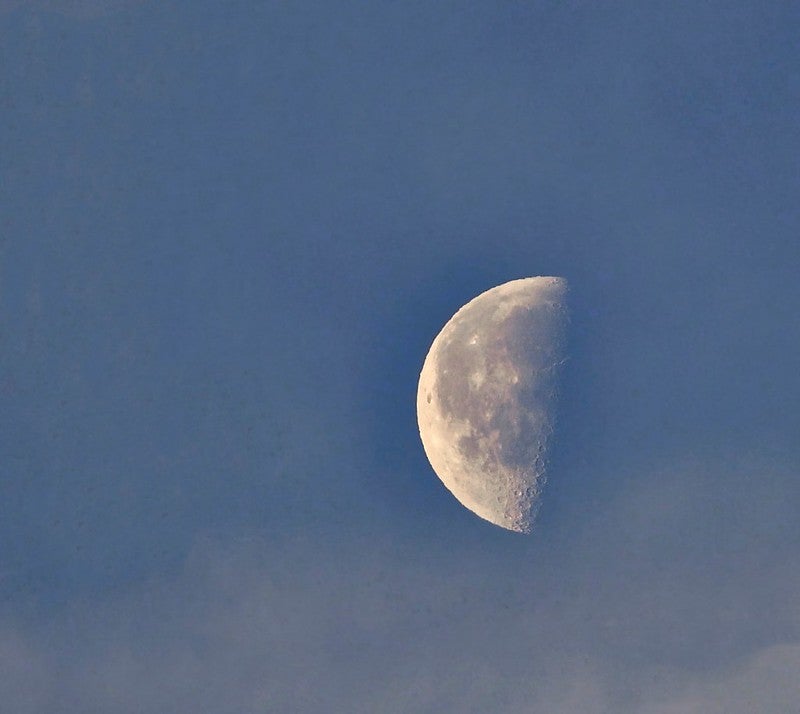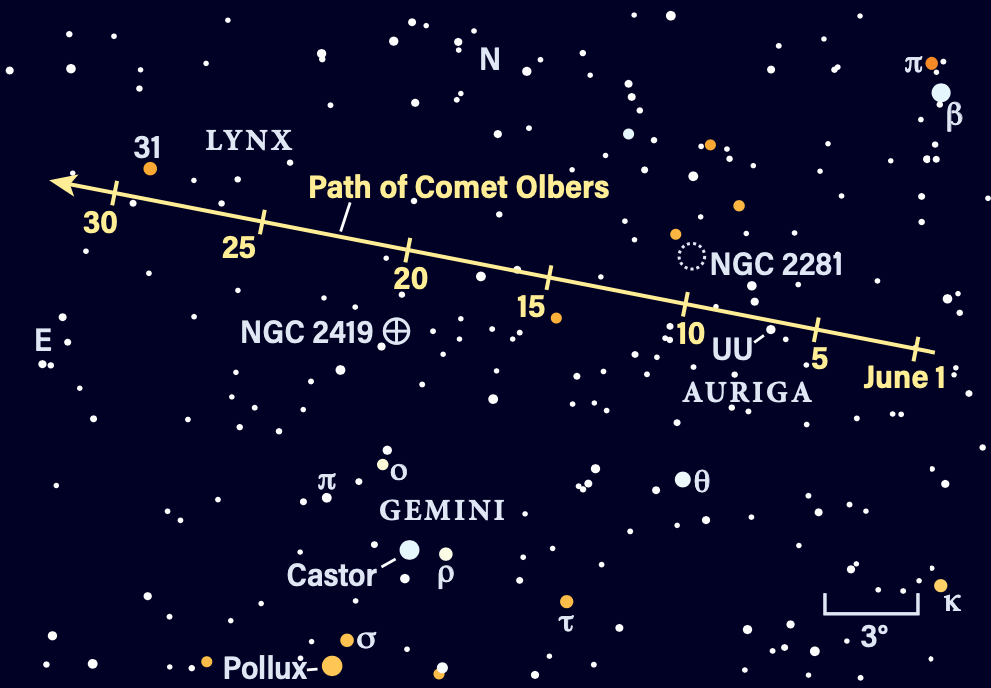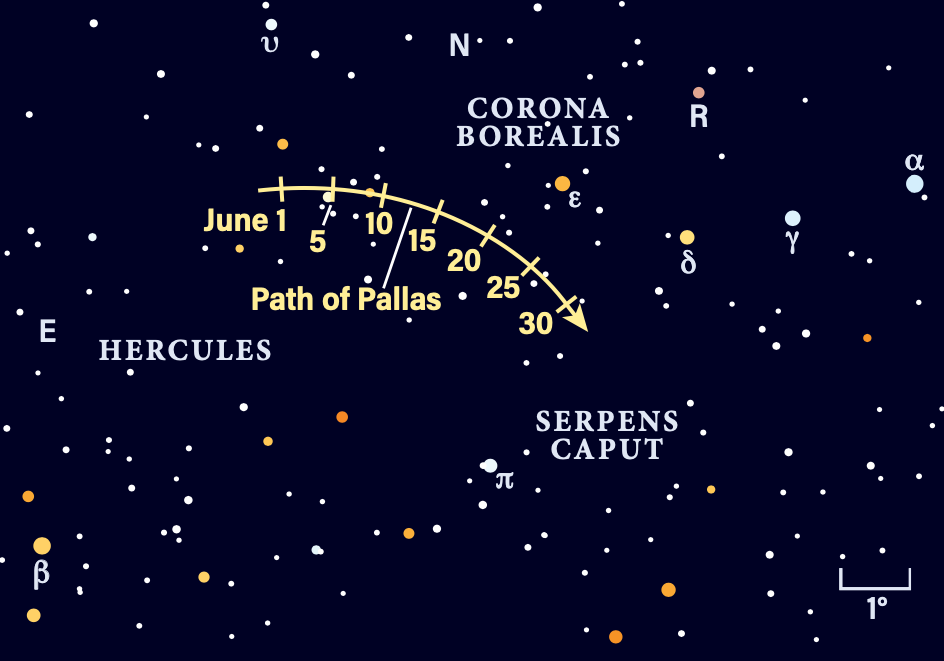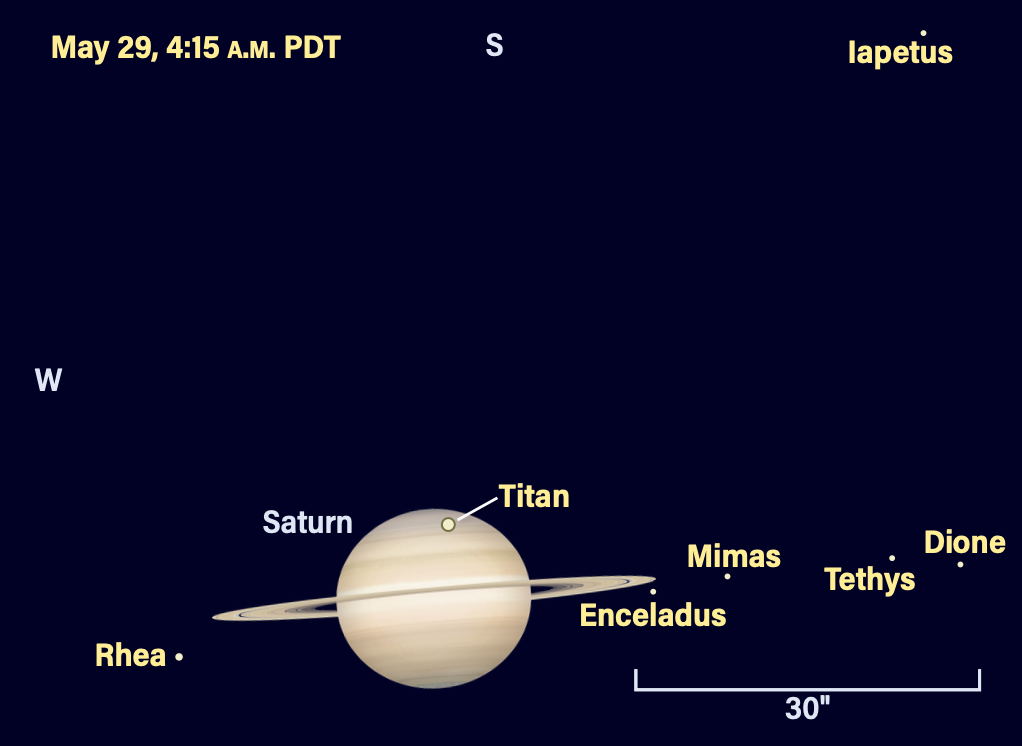
Friday, May 24
Earlier this month, we checked out the southeastern portion of the Moon to explore the rugged highlands there, including the crater Rheita and its associated valley. The Rheita Valley is actually made of several overlapping craters and associated with the larger impact that created Mare Nectaris to its north.
Let’s revisit this region of the Moon late this evening after moonrise. Now it appears under reverse lighting, as lunar sunset slowly begins moving from east to west, bringing the two-week-long night as the Moon wanes from Full to New. The Rheita Valley lies nestled between the craters Rheita to the north and Young D to the south, slashing from northwest to southeast on the lunar surface.
Under this particular lighting, you can more easily see how the valley points back to Mare Nectaris as its origin. Nectaris is a little less than 4 billion years old and stretches some 224 miles (360 kilometers) across. It lies south of the larger Mare Tranquillitatis, the Sea of Tranquillity, where astronauts first set foot on the Moon.
Sunrise: 5:37 A.M.
Sunset: 8:17 P.M.
Moonrise: 10:03 P.M.
Moonset: 5:58 A.M.
Moon Phase: Waning gibbous (98%)
*Times for sunrise, sunset, moonrise, and moonset are given in local time from 40° N 90° W. The Moon’s illumination is given at 12 P.M. local time from the same location.

Saturday, May 25
Between sunset and moonrise, it’s worth trying to catch Comet 13P/Olbers passing near the open cluster M37 in Auriga tonight.
Recently recorded at magnitude 8.2, Olbers is an excellent binocular or small telescope target. An hour after sunset, it’s roughly 15° high, hanging just below Theta (θ) Aurigae as the constellation sets in the west, to the right of the upright forms of Gemini the Twins. Tonight, Olbers is passing 3° due north of M37, one of the Charioteer’s three Messier objects (all open clusters).
At magnitude 6.2, M37 should appear some six times brighter than Comet Olbers. The young star cluster stretches about 24′ across and contains roughly 150 suns brighter than magnitude 12.5.
Also nearby are Auriga’s other two Messier clusters: magnitude 6.3 M37 lies 3.4° southwest of Olbers, while magnitude 7.4 M38 is some 4.6° west of the comet tonight. All four objects may be captured in the wider field of view of some binoculars, while telescopes will reduce the field of view significantly — a trade-off for their higher magnification and increased level of detail.
Sunrise: 5:37 A.M.
Sunset: 8:18 P.M.
Moonrise: 11:03 P.M.
Moonset: 6:48 A.M.
Moon Phase: Waning gibbous (95%)

Sunday, May 26
Let’s turn back to the post-sunset western sky tonight to look for asteroid 4 Vesta, currently making its way through Gemini, near where we observed Comet Olbers in Auriga last night.
An hour after sunset, you should easily be able to make out Castor and Pollux, the Twins’ brightest stars, still 30° high in the west. Castor lies on the right and Pollux on the left as the constellation sinks toward the horizon feet-first. Eighth-magnitude Vesta is about 6° directly below (southwest of) Pollux tonight, skimming some 2.7° northeast of magnitude 3.5 Wasat (Delta [δ] Geminorum). Vesta should be the brightest point in your field of view, and indeed may almost seem alone, as many of the background stars nearby are much fainter.
While you’ve got your binoculars or telescope out, swing it to Gemini’s upper left (east) to center on M44, the Beehive Cluster in Cancer. This bright open cluster shines at magnitude 3.7 and, on dark nights, is readily visible to the naked eye. It may be challenging without help tonight, as it’s setting and thus located near the horizon, which may not only hold lights but also a thick layer of turbulent air. Nonetheless, optical aid should show off this cluster nicely — it spans almost 100′ (more than 1.5°) and contains more than 300 stars.
Sunrise: 5:36 A.M.
Sunset: 8:19 P.M.
Moonrise: 11:54 P.M.
Moonset: 7:49 A.M.
Moon Phase: Waning gibbous (89%)
Monday, May 27
The Moon passes 0.9° south of dwarf planet 1 Ceres at 1 A.M. EDT. The two are located in Sagittarius and are just rising in the southeast for those in all time zones west of Eastern, so you may need to wait a while for them to climb a bit farther above the horizon. For example, by 1 A.M. CDT in the Midwest, they have risen to some 10° high.
The Moon is still bright, now 85 percent lit and hanging to the lower left of the Teapot asterism’s handle. Ceres is magnitude 8.1, easily picked up in binoculars or any small scope, though the moonlight may increase the challenge. As time ticks by, the Moon will move swiftly east, pulling farther southeast of Ceres with each passing hour. So, those on the West Coast will note the Moon is certainly no longer due south of the main-belt world by the time the pair is visible.
Although the two pass within less than a degree of each other, they don’t come close enough for the Moon to occult or move completely in front of Ceres from any vantage point on Earth. That won’t be the case in about a month, however, when the pair again come close and observers in the central and eastern U.S. will see Ceres briefly disappear as our satellite shifts in front of it in an occultation. Stay tuned for that event in a month’s time!
Sunrise: 5:36 A.M.
Sunset: 8:19 P.M.
Moonrise: —
Moonset: 8:57 A.M.
Moon Phase: Waning gibbous (81%)
Tuesday, May 28
The tiny planet Mercury is now magnitude –0.5, making it bright enough for keen-eyed observers to potentially spot in the half hour or so before sunrise.
Thirty minutes before sunrise this morning, Mercury has climbed just 3° high in the east. Those with clear horizons or elevated observing sites stand the best chance of viewing it today and perhaps even the next few days, as it appears lower each day when viewed at the same time.
This morning, the planet spans some 6″ when viewed through binoculars or a telescope, and appears nearly three-quarters lit. Its gibbous phase will progress quickly over the next few days, so if you are one of those lucky observers with good conditions to keep following it, give it a go. By the end of the week, Mercury is 80 percent lit and magnitude –0.8, but now only 2° high half an hour before sunrise.
If you are observing Mercury — or anything else — in the short time before sunrise, make sure to put your optics away several minutes before sunrise is scheduled to occur from your location, and note that it may differ from the time given below.
Sunrise: 5:35 A.M.
Sunset: 8:20 P.M.
Moonrise: 12:36 A.M.
Moonset: 10:11 A.M.
Moon Phase: Waning gibbous (72%)

Wednesday, May 29
The ringed planet Saturn is one of the highlights of the early-morning sky, and this morning the gas giant’s moons are putting on a show. Use your telescope to home in on the outer solar system world, glowing at magnitude 1 in eastern Aquarius.
The planet’s tilt with respect to Earth is now just over 2°. In addition to rendering the rings quite thin, it also places the orbital plane of the planet’s moons such that occultations and transits are common. This morning, many observers in the U.S. can see one such transit as Saturn’s brightest moon, Titan, crosses in front of the ringed world’s southern pole.
Those on the East Coast and in the Midwest will certainly be able to see the bright, 8th-magnitude moon approaching the planet from the east. Titan crosses onto Saturn’s disk around 5 A.M. CDT, just half an hour before sunrise in the Midwest and when the Sun is already up for those farther east. The moon takes more than three hours to cross, slipping off the disk long after sunrise has occurred even in the western U.S.
There’s an added bonus to the scene, though: Iapetus is also currently close to Saturn, sitting roughly 1′ southeast of the planet’s center. Iapetus orbits every 79 days, so spends a lot of time far from the planet. Its magnitude is also ever-changing, as it rotates between its brighter and darker hemispheres. It is now roughly magnitude 11, about halfway between its brightest and faintest magnitudes of 10 and 12, respectively.
Sunrise: 5:35 A.M.
Sunset: 8:20 P.M.
Moonrise: 1:11 A.M.
Moonset: 11:26 A.M.
Moon Phase: Waning gibbous (62%)
Thursday, May 30
Last Quarter Moon occurs this afternoon at 1:13 P.M. EDT. With a dark, moonless sky in the evening and the constellation Lyra a respectable 35° high in the east around 10:30 P.M. local daylight time, let’s seek out an old, familiar favorite: M57, famously known as the Ring Nebula.
Lying some 2,000 light-years from Earth, the Ring is a prime example of a planetary nebula. These are created as aging stars blow off their outer layers; the dying stellar remnant remains in the center of this cloud, lighting up the outer regions. Eventually, the nebula will dissipate and disappear in just 10,000 to 20,000 years, so these are relatively short-lived, ephemeral delights (cosmically speaking!).
The easiest way to find the Ring is simply to look halfway along a line drawn between the stars Gamma (γ) and Beta (β) Lyrae. The nebula glows at 9th magnitude and has a diameter of roughly 1′. To many it does indeed look like a ring, and astronomers now believe this is not a projection effect but because the nebula is truly torus shaped. This glowing cloud surrounds a tiny white dwarf in the center, which shines at 15th magnitude — a challenging but achievable observation under the right conditions. If you want to try for it, though, it may be best to wait a few months, until the region soars high overhead in the middle of the night.
Sunrise: 5:34 A.M.
Sunset: 8:22 P.M.
Moonrise: 1:40 A.M.
Moonset: 12:39 P.M.
Moon Phase: Last Quarter
Friday, May 31
The Moon has a busy day today, passing 0.4° south of Saturn at 4 A.M. EDT before skimming 0.02° south of Neptune at 11 P.M. EDT.
Both planets are in the pre-dawn sky, so head outside an hour before sunrise to catch our satellite now just below (if you’re on the East Coast) or to the lower left of (for observers in the Midwest and farther west) Saturn in Aquarius. The Moon is a delicate waning crescent whose light shouldn’t interfere too much with spotting the ringed world.
By 4:30 A.M. CDT, Luna is 1.5° southeast of Saturn and just over 10° southwest of Neptune. The latter planet, at magnitude 7.8, will certainly require binoculars or a telescope to spot. Do so earlier rather than later, as the sky will only grow lighter with the encroaching dawn, washing the planet from view. Neptune is now 2.8 billion miles (4.5 billion km) from Earth, its disk spanning just 2″ and appearing more as a small, dim, “flat” star in the field.
Saturn is huge and detailed by comparison, with its disk 17″ across and its rings roughly 40″ from end to end. That narrow tilt relative to the moons’ orbital plane is again on display this morning, as Titan lies nearly 2′ due west of the planet, in line with the rings. Nearer to the world, 10th-magnitude Rhea, Tethys, and Dione are also in line, with the former two to the east and the latter to the west. Large scopes or video capture may be able to pick up even fainter Mimas a just off the eastern tip of the rings, or perhaps even Enceladus, transiting the disk just south of the rings and accompanied its shadow between about 4 A.M. EDT and 4:40 A.M. MDT (note the time change as sunrise occurs in the eastern two U.S. time zones while the tiny moon is transiting).
Sunrise: 5:34 A.M.
Sunset: 8:22 P.M.
Moonrise: 2:06 A.M.
Moonset: 1:52 P.M.
Moon Phase: Waning crescent (39%)

Sky This Week is brought to you in part by Celestron.









